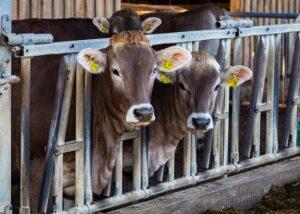Producer prices of slaughter cattle increased further
According to AKI slaughter statistics, in January-April 2025, cattle slaughter in live weight increased by 31 percent compared to January-April 2025. Cow slaughter, which accounts for more than half of all slaughter, increased by 8.3 percent, and heifer slaughter by 7.5 percent.

(Photo: Pixabay)
According to KSH data, Hungary’s live cattle exports decreased by 55 percent (11,100 tons) and their value by 48.2 percent in January-April 2025 compared to the same period in 2024. The main partners were Kosovo, Croatia, Austria and Poland. Hungary’s live cattle imports decreased by 76.7 percent (2,000 tons) and their value by 69.3 percent compared to a year earlier. The volume of beef exports increased by 43.1 percent (3,800 tons). The volume of beef imports decreased by 7.0 percent (4.2 thousand tons), while its value increased by 22.2 percent in the observed period. According to AKI PÁIR data, the producer price of slaughter cattle continued to increase in the 1st–24th week of 2025: per 1 kg of carcass warm weight, the producer price of a young bull was HUF 1,827, that of a slaughter heifer HUF 1,271 and that of a slaughter cow HUF 1,360.
AKI PÁIR
Related news
AM: Government helps farmers with a loan moratorium
🎧 Hallgasd a cikket: Lejátszás Szünet Folytatás Leállítás Nyelv: Auto…
Read more >More than 100 Hungarian farmers also demonstrated in Brussels
🎧 Hallgasd a cikket: Lejátszás Szünet Folytatás Leállítás Nyelv: Auto…
Read more >NAK: Domestic producers await customers with an ample supply of all pine species
🎧 Hallgasd a cikket: Lejátszás Szünet Folytatás Leállítás Nyelv: Auto…
Read more >Related news
New Year’s Eve: shortened opening hours in stores – general store closure on January 1
🎧 Hallgasd a cikket: Lejátszás Szünet Folytatás Leállítás Nyelv: Auto…
Read more >Tejföl is only a name for live flora: new categories for sour dairy products will be introduced from 2026
🎧 Hallgasd a cikket: Lejátszás Szünet Folytatás Leállítás Nyelv: Auto…
Read more >Sausage prices before New Year’s Eve: cheap entry, expensive premium – how big is the gap on the shelves?
🎧 Hallgasd a cikket: Lejátszás Szünet Folytatás Leállítás Nyelv: Auto…
Read more >






